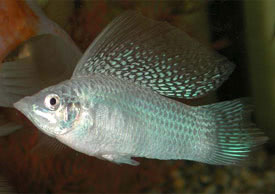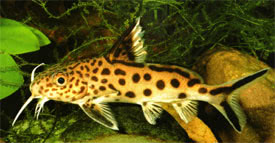
 Magyarul / Hungarian
Magyarul / Hungarian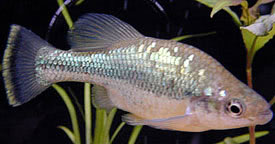
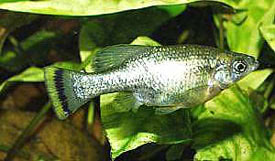

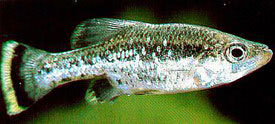
- Scientific name: Ameca splendens
- Common name: Butterfly splitfin
- Group: Livebearers
- Habitat: Central America; Mexico
- Size: Males:6-8 cm, females:10-12 cm
- Biotope: Limited to a small area of the Ameca river basin in Mexico
- Social behavior: Territorial, males often fight.
- Diet: An omnivore that will eat just about anything. Requires a diet high in vegetable matter and will graze on algae. Use a good quality flake food and supplement with vegetables such as peas and spinach. Offer frozen or live food weekly.
- Breeding: Easy
- Tank: Minimum 100 litres
- Population: 5-8 fish for 100 litres
- Decoration: Needs a lot of room for swimming and plenty hiding places as dominant males will bully smaller individuals as well as harass females.
- Temperature: 25-28 °C
- pH: 7-8
- Hardness: 10-20 NK°
- Lifespan: 5 years
All goodeids come from central Mexico and are considered to be endangered. Some species are thought to be extinct in the wild and are maintained only in the tanks of enthusiasts. This family thus offers the aquarist an excellent opportunity to contribute to a worthy conservation effort.
Ameca splendens is one the most attractive members of the family and consequently it's probably the most popular. A robust and active fish, the dominant males catch the eye when flashing their yellow tails at the females. Like most of the goodeids however, it has a deserved reputation for fin-nipping and occasionally its aggression leads to the death of weaker tank mates.
Breeding Ameca splendens is not difficult. Kept in a colony, the females will naturally fall pregnant. Gestation is around 60 days and before giving birth the females are huge. After dropping around 10-15 fry, the females resemble a deflated balloon.
The fry are large (up to 2cm) and after a day or two will be eating much the same diet as the adults. Some adults will chase and occasionally kill fry but I never witnessed one being eaten. I always removed fry to prevent any unnecessary deaths. They can be reintroduced into the colony when they are around 3cm, which they will reach in about one month.
It's an amazing sight to see such large fry. Of additional interest is the fact that they are born with their little umbilical cords still attached. These drop off within a day or so.




